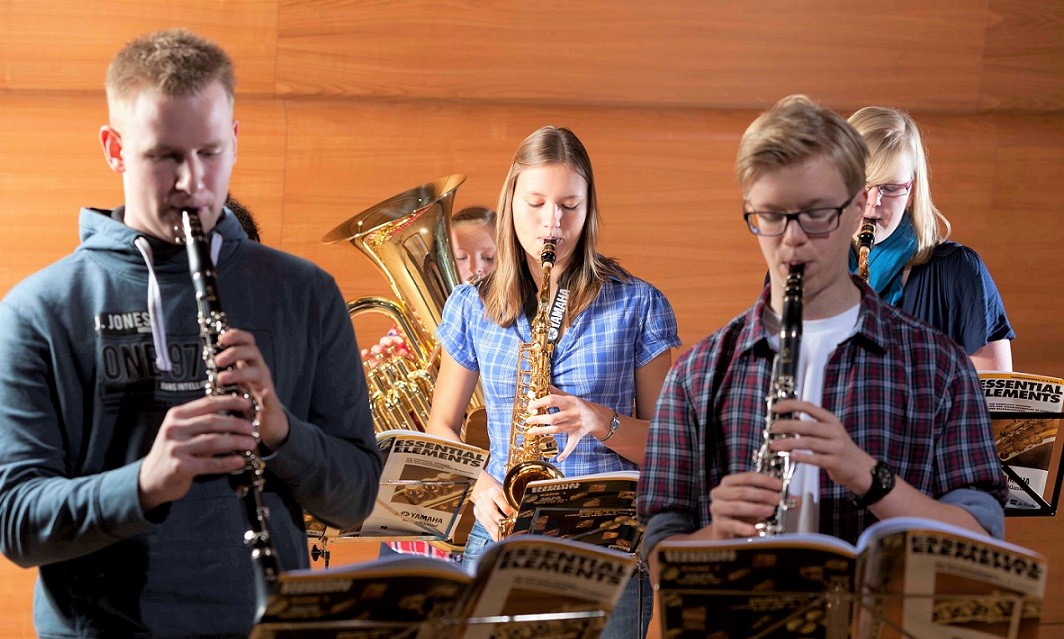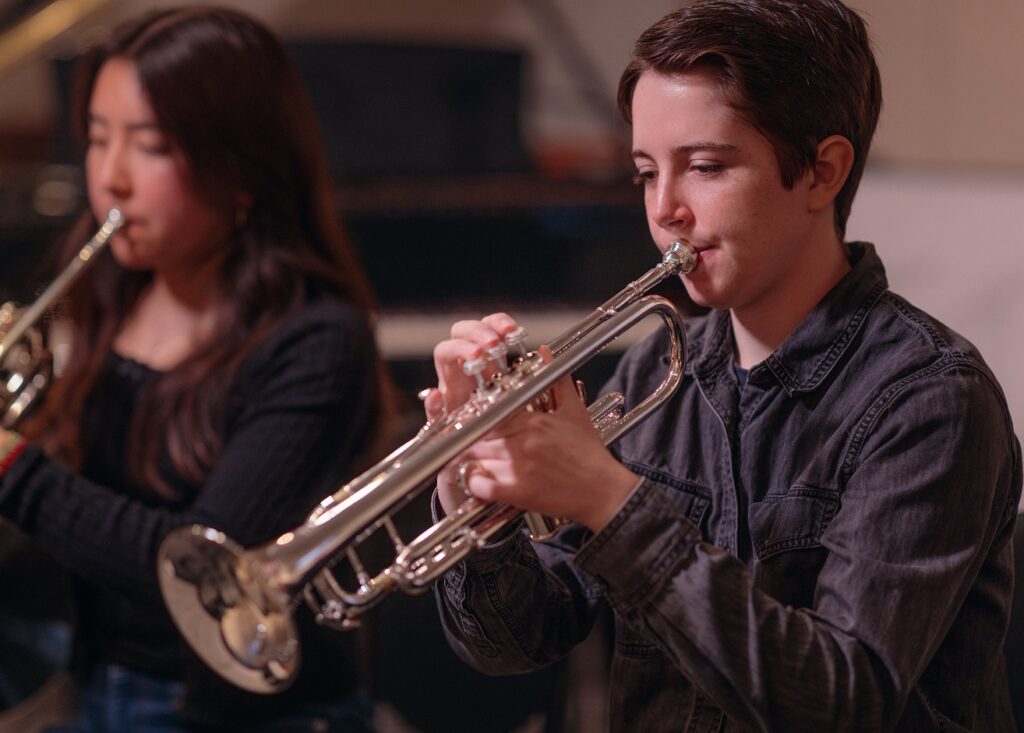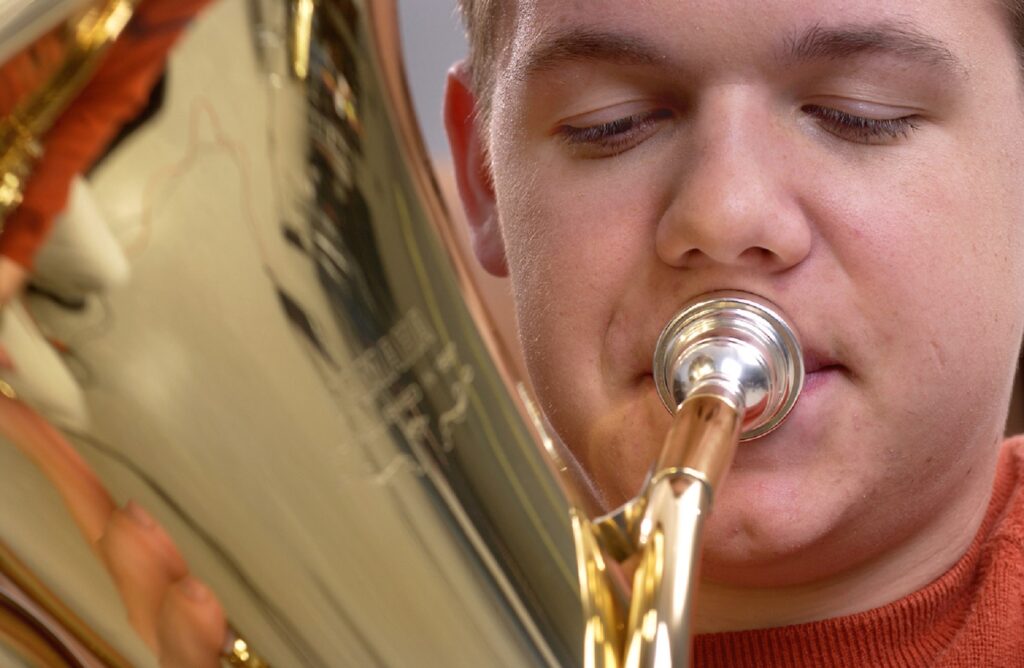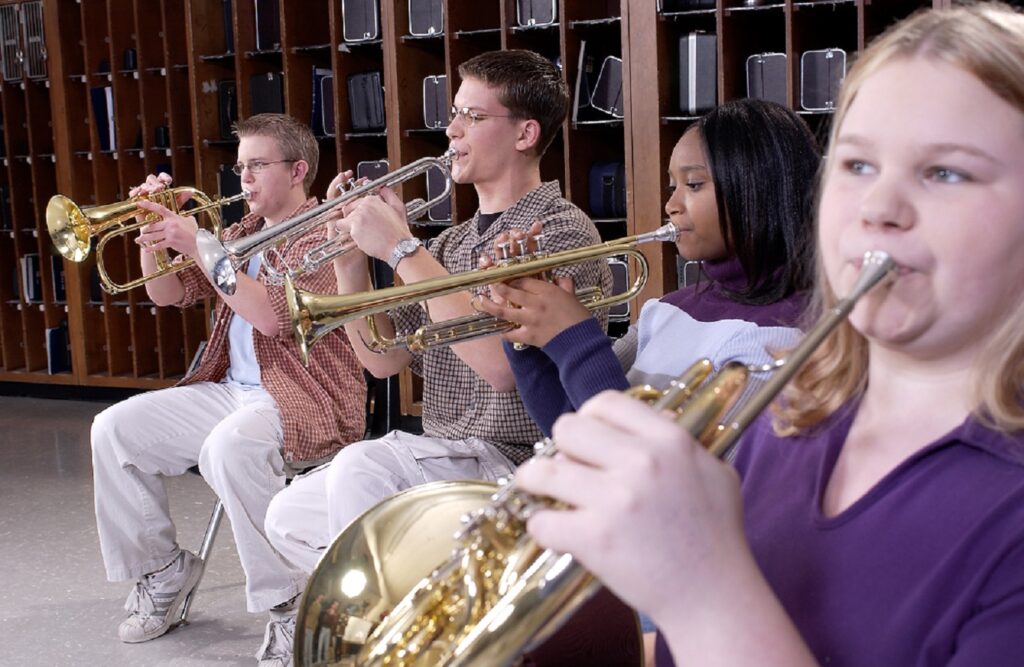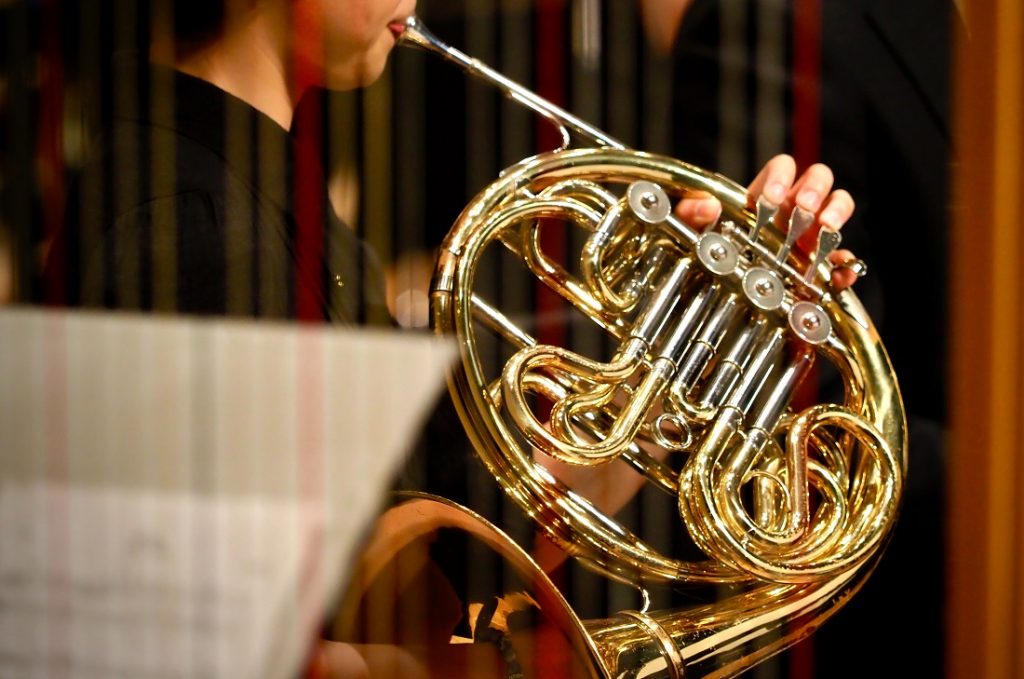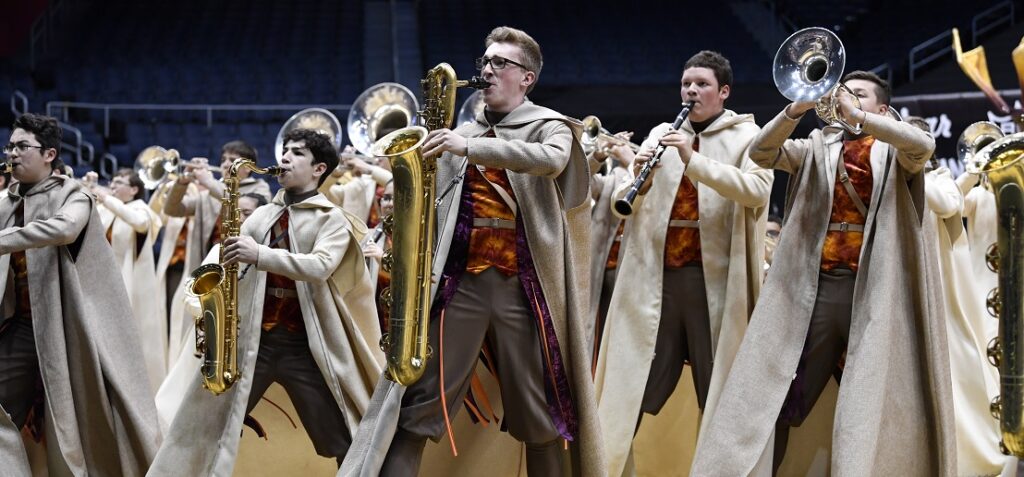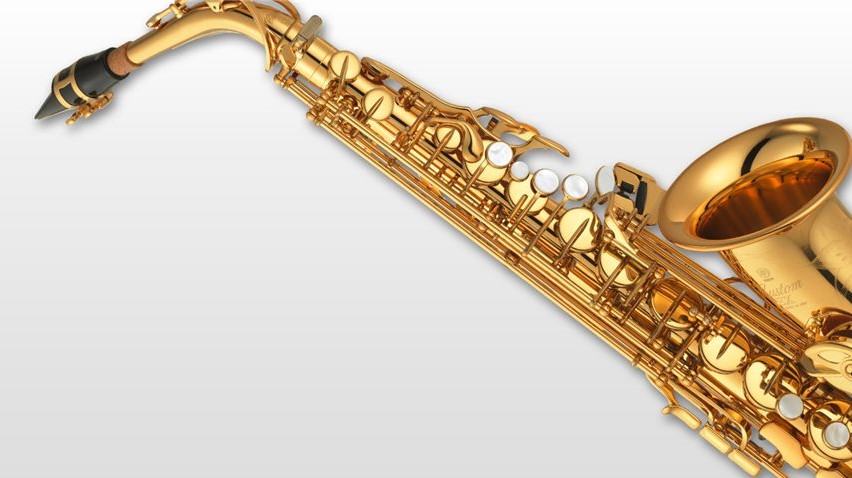Navigating Vibrato on Woodwinds
Try this unconventional approach with your high school winds section to master vibrato.
Woodwind players who are in private lessons often begin using vibrato well before their school music director has addressed it.
Private lessons are great, but vibrato can quickly trickle down to the rest of a section and without proper instruction, you will have mismatched sound and beating sound waves within the ensemble.
Include Vibrato Exercises in Daily Warm-ups
Vibrato on the Woodwinds
First, let’s look at the use of vibrato on the most popular woodwind instruments.
Flute: Because flutes are very flexible instruments (by that, I mean the pitch is bent very easily), vibrato can quickly get out of hand. Watch flutist Gina Luciani describe how to perform vibrato on the ocarina in this video.
Vibrato is performed the same way on all flutes. Luciani describes it as a “Ha Ha Ha” sound that feels like it is coming from the throat, combined with a bit of a “Huh” or “Hah” syllable. You will also feel the diaphragm and lower stomach tense, while the throat and mouth remain open and relaxed.
Luciani says that many musicians begin vibrato on the flutes far too early — and I agree. Flutes seem to be the first section to figure out vibrato … for better or worse.
Oboe: Because oboe players are often switched from the flute, it is best to hold off on vibrato within the oboe section until students are very confident in their pitch.
YouTuber and oboist Oboeron explains vibrato on the oboe. He describes oboe vibrato as throat vibrato and says that it feels like a little cough. From my experience as a multi-instrumentalist, I’ve noticed that vibrato on the oboe feels very similar to vibrato on the flute.
Saxophone: Saxophonists create vibrato on their instruments with lower jaw movements. So, it is much more difficult for your sax section to end up with unintentional vibrato than your flutes and oboes. Watch Jay Metcalf demonstrate proper saxophone vibrato technique.
Clarinet: Most band directors will not need to consider vibrato on the clarinet. Traditional concert band literature calling for vibrato on the clarinet is practically obsolete. However, there are a handful of scenarios that may lead to, or call for, clarinet vibrato.
For example, high school flutists who have just switched to the clarinet may automatically add vibrato to their clarinet playing by using their flute methods — manipulating the air with their throats. Vibrato can be created on the clarinet most likely with embouchure (like the saxophone) or by manipulating the air stream by changing the mouth, throat and diaphragm.
One situation where you will lean heavily into teaching clarinet vibrato is in jazz band. Jazz clarinetists use large amounts of vibrato, especially when soloing.
Clarinetist Michelle Anderson provides an excellent explanation and example of vibrato on the clarinet in this video.
Enlist the Help of Sectional Leaders
Whether your band has the funds to outsource sectional leaders to your local orchestra or if group sessions are led by your first chairs, setting aside the time for sectionals is well worth it. Section leaders (or guest musicians) can help small groups practice instrument-specific vibrato exercises. This method is really effective because it creates more time for one-on-one feedback.
CHECK IT OUT: State-of-the-art clarinets for your classroom!
Teach Vibrato to the Band as a Whole
Vibrato isn’t commonly taught in high school bands. This is surprising, given that it is an essential skill for players who want to reach intermediate to advanced levels.
So why is it so often shrugged off by directors? Vibrato is hard to teach. It’s one of those squirrely things that is better practiced than explained.
I recommend something unconventional: Teach vibrato to your whole band, all at once. Audition-only symphonic groups will greatly benefit from this method.
Addressing the entire band is the fastest way to get the group on the same page. If you aren’t ready for your students to start adding vibrato into your band festival literature, just tell them so! That being said…
- Remain Encouraging: It’s all too easy to become “that band director” who “doesn’t let us.” Make it clear that directing a band and being a private music instructor have similar goals that are not exactly the same.
- What About the Brass? While the focus here is to address the trickle-down effect vibrato often has in woodwind sections, if you are discussing vibrato with the whole band, you should start teaching brass players the proper way to add vibrato, too. Brass vibrato is most commonly achieved by manipulating the corners of the embouchure in a small “Oo-Ee” motion.
Add Online Listening Assignments
Listening assignments are a really easy want to get your students to hear proper examples of vibrato on their instruments. Put samples online with a short quiz to ensure that students actually listen to them. Another plus to putting assignments online is that you won’t need to compromise valuable rehearsal time to listen to solos for each instrument.
Include Vibrato Exercises in Daily Warm-Ups
While percussionists may be twiddling their thumbs for a few minutes, it is worth it to add vibrato exercises alongside your chorales and long tones during your band’s daily warm-ups. Again, please note that I would only recommend this for auditioned, high school bands. You want to make sure that most of your students have a well-developed sound (and have been on this instrument for several years) before beginning these exercises.
Here are some recommendations:
- Start with Note Bending — Note bending is an exercise that helps students focus tone, relax their lips and gain better control over their instrument as a whole. While the technique for each instrument varies somewhat, it can be replicated on every woodwind. Here is an example of flutist Denis Bouriakov note bending.
- Perform Vibrato to a Steady Beat — After students are comfortable with note bending, create a simple exercise in your favorite notation program with slurred quarter notes. Encourage your students to think or feel the syllable “Oooo-Eeeee Oooo-Eeeee.” Audiating contrasting syllables can help students vary the pitch more easily. Tell them to not be afraid to exaggerate.
- Increase Speed of the Steady Beat — Once your students are ready, raise the bar. Create an exercise with 8th note vibrato. Before you allow students to use expressive vibrato, have them perform the emphasis on 16th notes. If your students struggle to get from the 8th note vibrato to the 16th note vibrato, have them practice on triplets instead. This helps bridge the gap between the 8th and 16th note vibrato “rhythms.” After your students are comfortable doing this, they can begin working on vibrato in an expressive setting like a solo.
Don’t Give Up!
While vibrato can quickly get out of hand, it’s important to remember the end goal: beautiful, expressive playing. Plus, if you teach vibrato to your band as a whole, members of the section who don’t have the time or funds to receive private lessons will still have a chance to learn a more advanced technique.
With a little extra help from section leaders and some emphasis on daily warm-ups, your band will be sounding polished in no time.











